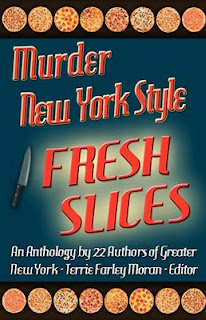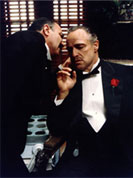
Janice Law
Some time ago, I wrote about Baroness Emma Orczy's pioneering female detective, Lady Molly of Scotland Yard for the now closed Criminal Brief website. That led me to Orczy's more famous Old Man in the Corner who debuted in 1908. He was part of a group of highly rational, puzzle solving detectives inspired by Sherlock Holmes, and possibly the earliest of the 'armchair' detectives and ancestor of American favorite Nero Wolfe.
Like Sherlock Holmes with Watson, he has an amanuensis, Miss Burton of the Evening Observer, the young "female reporter" who was herself something of a novelty. She meets the Old Man at her favorite coffee shop, the Norfolk branch of the Aerated Bread Company, where he dines on milk and cheesecake and plays endlessly making knots in a length of string.
His casual remark that, "There is no such thing as a mystery in connection with any crime, provided intelligence is brought to bear on the investigation," begins their on-going conversation about the sensational crimes of the day. Miss Burton is skeptical about the Old Man's claims, but again and again he produces ingenious solutions to baffling mysteries.
His narratives of the crimes are extremely clear and provocative, and, despite her reservations, Miss Burton is fascinated. Unlike Watson, her only function is to be a sounding board and recorder. The Old Man leaves the coffee shop for excursions to courthouses and to assemble the dossiers of photos and documents he needs, but all such adventures are kept off stage.
In the Old Man in the Corner stories, Orczy keeps as strictly to the "unities" as Aristotle could want. Everything is confined to the ABC shop and a single conversation with Miss Burton. So far so good in a conventional vein; the puzzles are complex, the casts of characters interesting, the crimes varied.
 The Old Man is, however, far odder and more distinctive than that brief summary would suggest. Unlike any other detective I can think of, the Old Man is not on the side of justice. Yes, we've had favorite characters who were criminals, Donald Westlake's bumbling robbers, for example. Lawrence Block has run a series about a professional hit man and Dexter, blood spatter expert and serial killer, is in print and on the tube.
The Old Man is, however, far odder and more distinctive than that brief summary would suggest. Unlike any other detective I can think of, the Old Man is not on the side of justice. Yes, we've had favorite characters who were criminals, Donald Westlake's bumbling robbers, for example. Lawrence Block has run a series about a professional hit man and Dexter, blood spatter expert and serial killer, is in print and on the tube. But both of the latter are ultimately on the side of the angels, dispatching justice, if of a peculiar and personal sort. They may be immoral, but it would be unfair to dub them amoral. Not so the Old Man.
Several times, Miss Burton asks him why he doesn't place his superior intellect and clever solutions at the disposal of the police. The Old Man is perfectly clear about his motivation: He admires the murderers. Of the Fenchurch Street killer, he exclaims, "Ah! it was cleverly, artistically conceived! Kershaw is a genius." And he concludes on a note of mock horror at the thought of hanging such a man.
The Old Man's superior intellect is reserved for his own enjoyment and for the edification and amazement of Miss Burton, who occasionally, as in The York Mystery, agrees that publishing the solution would be unwise.
The Old Man's cases run the gamut of Edwardian crime, with an emphasis on inheritance squabbles, stolen jewelry, crimes of passion, and crimes to protect reputation and status. They often rely on disguises, and it must be said that the Old Man, who has some childish traits, has an almost childlike faith in the powers of wigs and costumes to confuse even those nearest and dearest.
If this is a weakness, the Old Man has a counterbalancing strength. Like Lady Molly, and unlike police officialdom, the Old Man never rules out female criminals and never sells the opposite sex short. "French detectives, who are acknowledged masters in their craft," he tells Miss Burton in The Theft at the English Provident Bank, "never proceed till after they have discovered the feminine element in a crime..."
The Old Man solves one case because of the modus operandi - a stab in the back. An English gentleman would strike an opponent, he says. A woman, conscious of her physical weakness but resolved to prevail, would choose a knife in the back.
The most unsettling of his cases, however, is The Mysterious Death in Percy Street, which unfortunately is placed midway through Dover Book's good collection. It belongs at the end, and clearly represented a point where Orczy was considering dropping her curious detective.
In this case, an elderly woman who had been preyed on financially by an improvident nephew is found dead along with her pet canary. The plot is as intricate as ever, but one of the details is the presence of a particularly intricate knot. At the end of the story, it strikes Miss Burton that the crucial knot is just such a one as her companion habitually makes. "If I were you," she said, without daring to look into that corner where he sat, "I would break myself of the habit of perpetually making knots in a piece of string."
When she looks up, he is gone and is never seen again - until the next series of Old Man in the Corner stories began.
This will be my last regularly scheduled SleuthSayers piece, although I hope to contribute the occasional column. It's been fun and I've appreciated the kind comments.



























